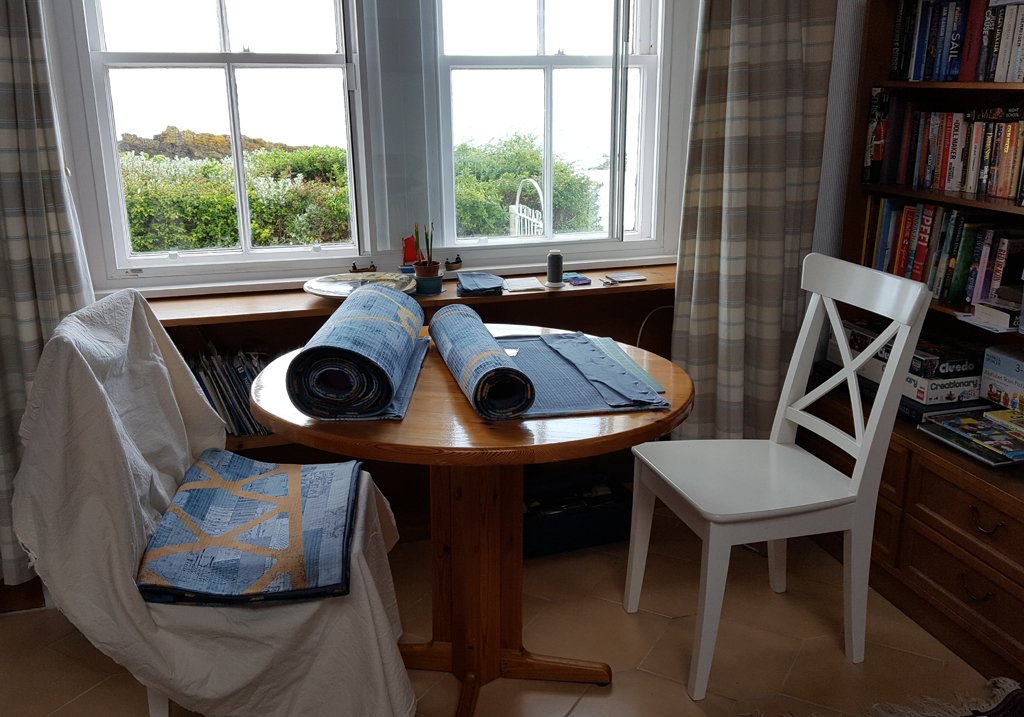 It's a wet morning here in Dunure so time to stitch sleeves onto quilts, time to drink coffee and read the newspaper, and time to think. To think about the work I need to create for my exhibitions next year. And time to think about how I work.
It's a wet morning here in Dunure so time to stitch sleeves onto quilts, time to drink coffee and read the newspaper, and time to think. To think about the work I need to create for my exhibitions next year. And time to think about how I work.
One of the reasons that I've chosen to partner with Helen Conway is that we share the same professional, 'get it done' attitude to making our art and exhibiting our art. We plan our time and know that we will fill the galleries. We share out the administrative stuff and trust each others decisions. We will compromise where we need to.
But we are very different in the way we actually create. Helen is like a sponge - she sees inspiration pretty much everywhere and is constantly spinning new ideas. Not just about the subject of her work but also about the materials she uses. I know that she uses journaling to provide some order to her thoughts but mostly she goes into her studio and just starts. She works in a mess of materials, tools and books. To me it looks like chaos but to Helen it is where she finds creativity.
I am the opposite. The world is full of inspiration but I knew that I would not develop as an artist if I continued to hop from one idea to the next. Or if I continued to take workshops on different techniques. So I have chosen to work in series and to limit the number of techniques / materials I use. And I am very disciplined about it. The old me would have been busy trying to create something based on the beautiful sunsets here in Dunure but the current me enjoys the sunset then continues to stitch sleeves on quilts. I do most of my 'designing' in my head. I don't just go into the studio and start. I occasionally write ideas down but mostly I let them brew and filter as I work in the studio. Yes I will spend lots of time getting the exact colours and textures I want but the experimenting and sampling is really just fine tuning the decisions I have already made in my head. And I can't work in chaos. 'Messy' in my studio is when there are snippets of thread and fabric on the floor. I wash up and tidy as I go. I typically plan my activities for the week and go into the studio knowing exactly what to do first (even if that is to sweep the floor). I'm not at all good at spontaneity.
But I recognise my strengths and weaknesses and have chosen, for now at least, to work with a media - breakdown printing - that cannot be 100% controlled, that introduces unintentional marks into my work. Marks that will hopefully resonate with Helen's work when we exhibit together in 2018.
 Two weeks in and my 100 (week) day challenge is working. I am a lot more enthusiastic about making small works and the ideas are really flowing. Kilns 2 is finished, albeit needs stretching over canvas. And, in between working at my print bench this weekend, I have completed the background stitching on a third piece. I thought that committing to finishing at least one piece each week would be a stretch but already I'm finding that I am quicker and more decisive when building backgrounds.
Two weeks in and my 100 (week) day challenge is working. I am a lot more enthusiastic about making small works and the ideas are really flowing. Kilns 2 is finished, albeit needs stretching over canvas. And, in between working at my print bench this weekend, I have completed the background stitching on a third piece. I thought that committing to finishing at least one piece each week would be a stretch but already I'm finding that I am quicker and more decisive when building backgrounds. I have completed the first week of my 100 (week) day challenge. My goal is a steady 2 hours every weekday evening focussed on making small art with a commitment to finish at least one piece each week.
I have completed the first week of my 100 (week) day challenge. My goal is a steady 2 hours every weekday evening focussed on making small art with a commitment to finish at least one piece each week. I have long admired those artist who publicly take up '100 days' challenges or '52 week' challenges. Committing to do something, whether it is making a text collage (as per
I have long admired those artist who publicly take up '100 days' challenges or '52 week' challenges. Committing to do something, whether it is making a text collage (as per 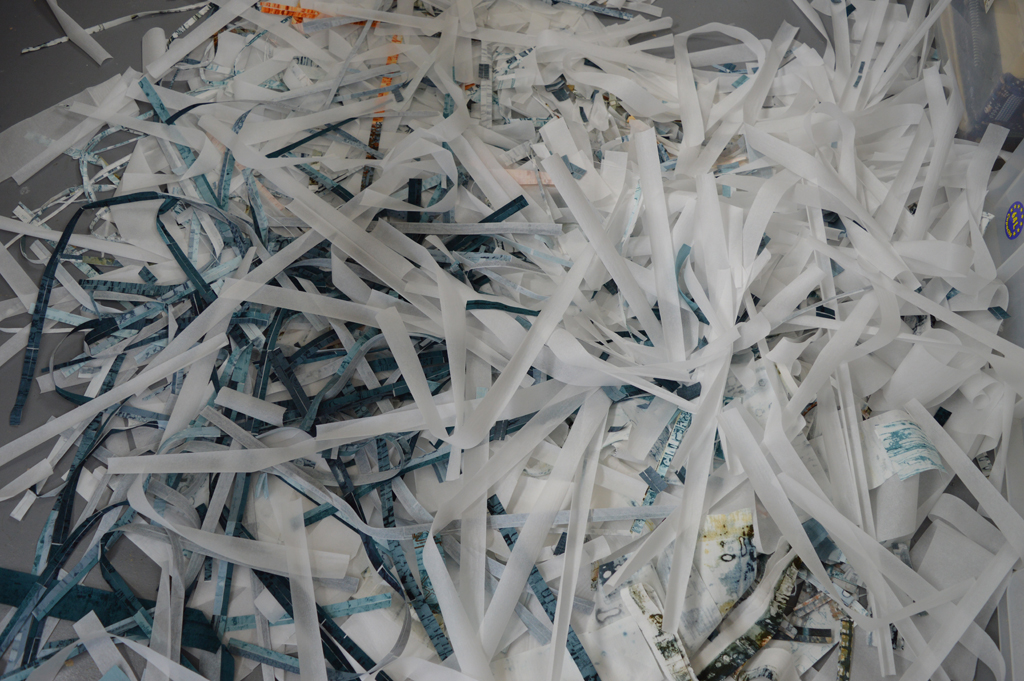 I recently
I recently 
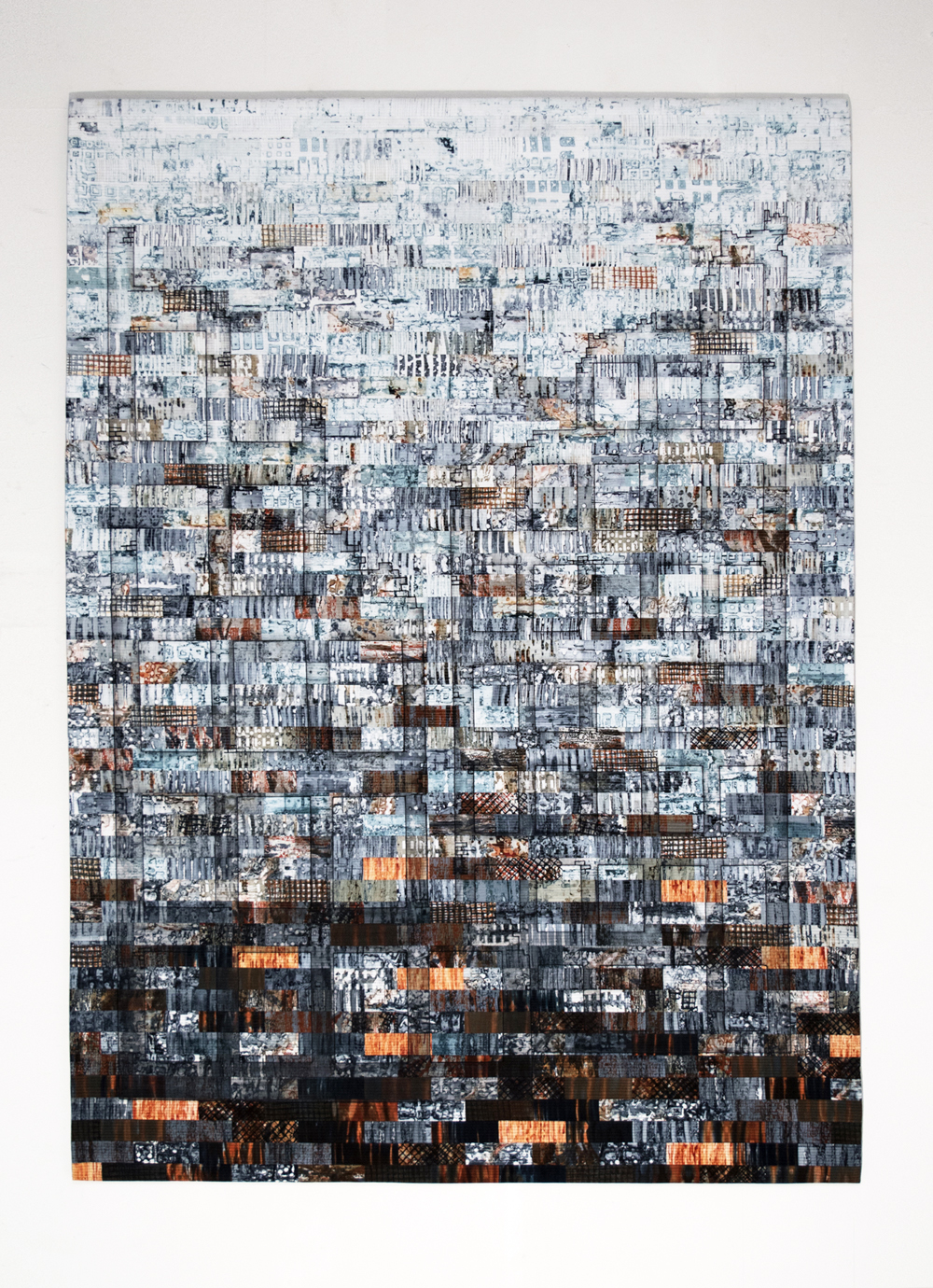
 It's a wet morning here in Dunure so time to stitch sleeves onto quilts, time to drink coffee and read the newspaper, and time to think. To think about the work I need to create for my exhibitions next year. And time to think about how I work.
It's a wet morning here in Dunure so time to stitch sleeves onto quilts, time to drink coffee and read the newspaper, and time to think. To think about the work I need to create for my exhibitions next year. And time to think about how I work.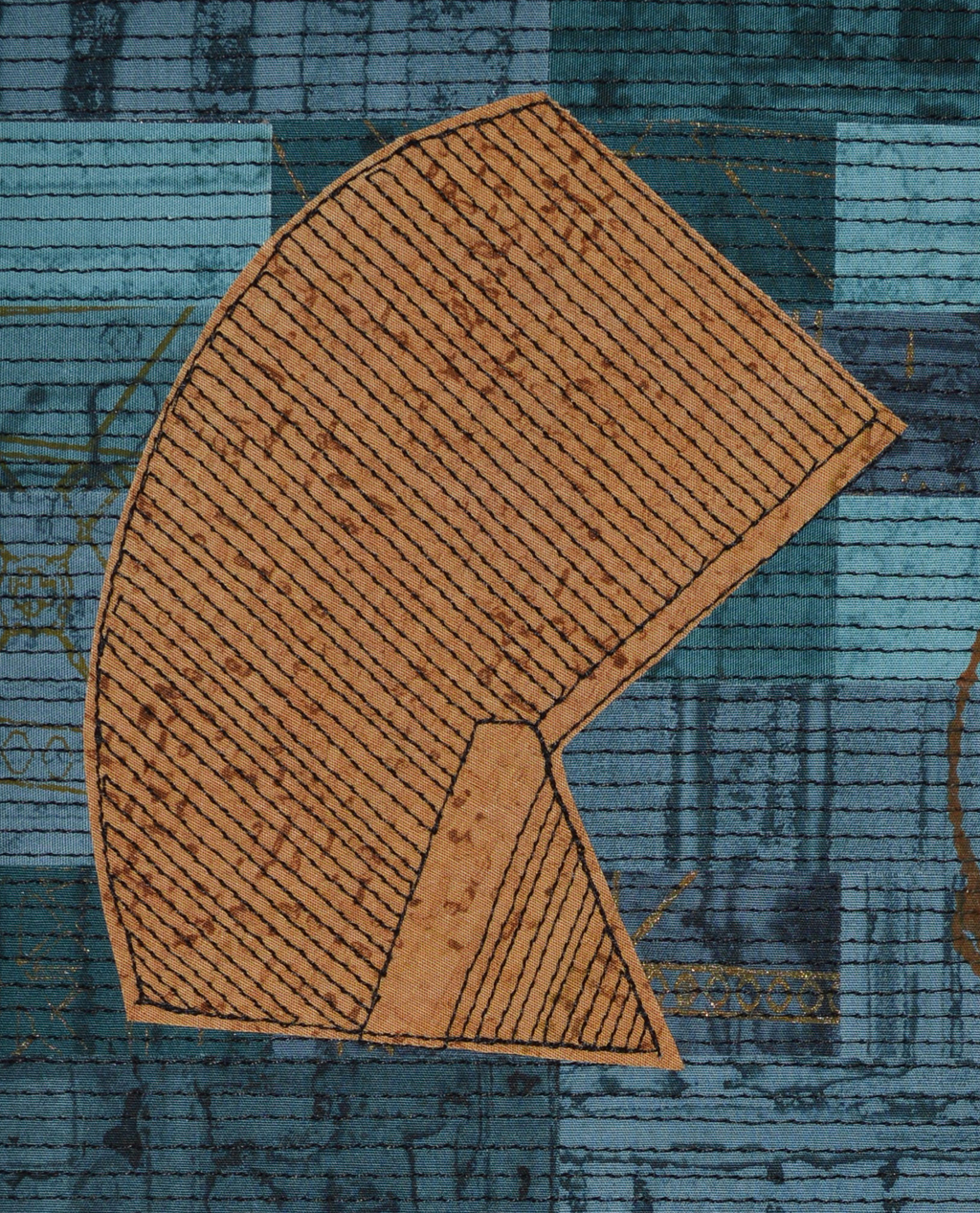 Inspiration is a very personal thing. My inspirations are nearly all urban. I love industrial landscapes although it is getting harder to distinguish between pale grey corrugated metal retail parks and pale grey corrugated metal factories. Some would say that both are factories.
Inspiration is a very personal thing. My inspirations are nearly all urban. I love industrial landscapes although it is getting harder to distinguish between pale grey corrugated metal retail parks and pale grey corrugated metal factories. Some would say that both are factories.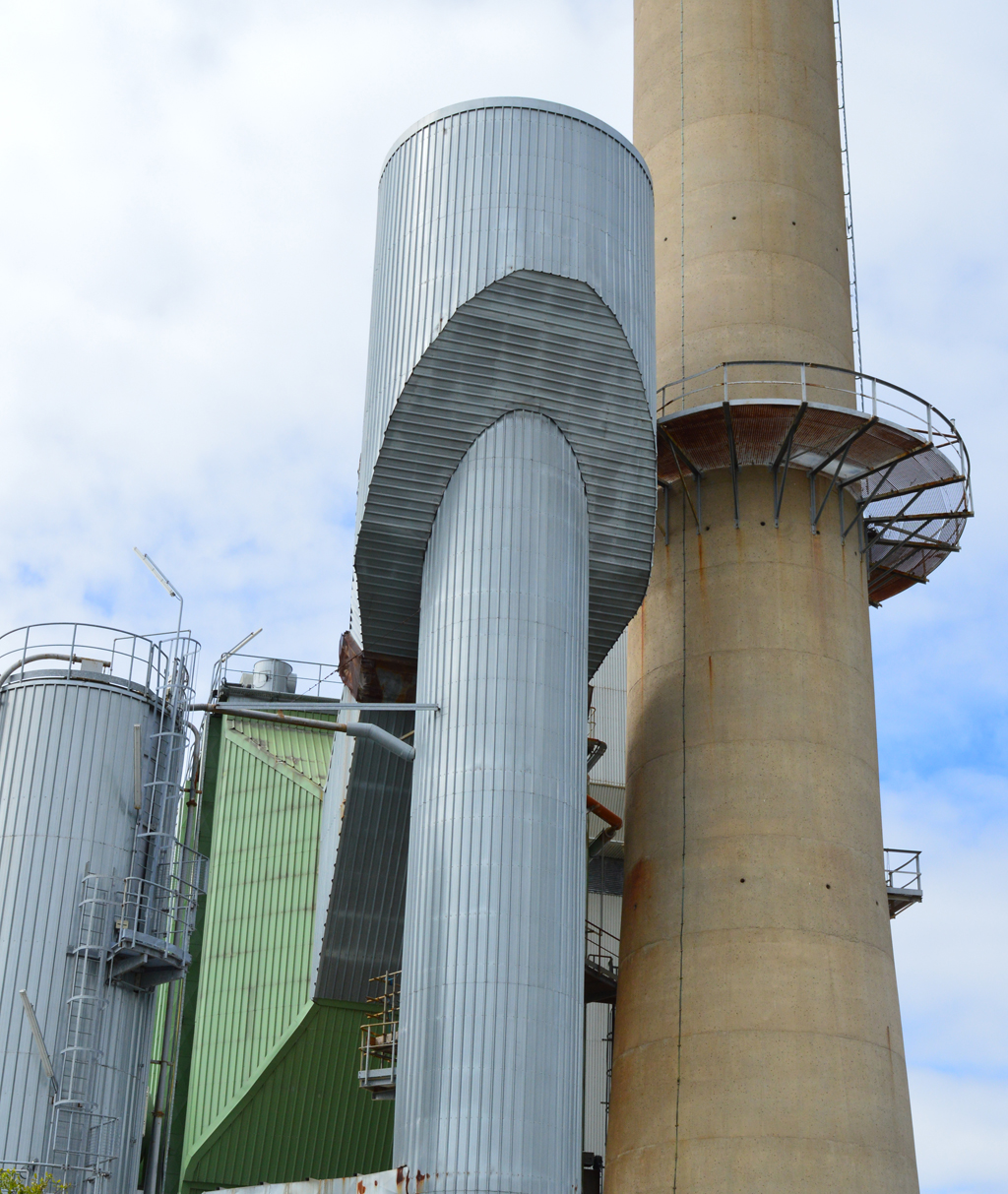
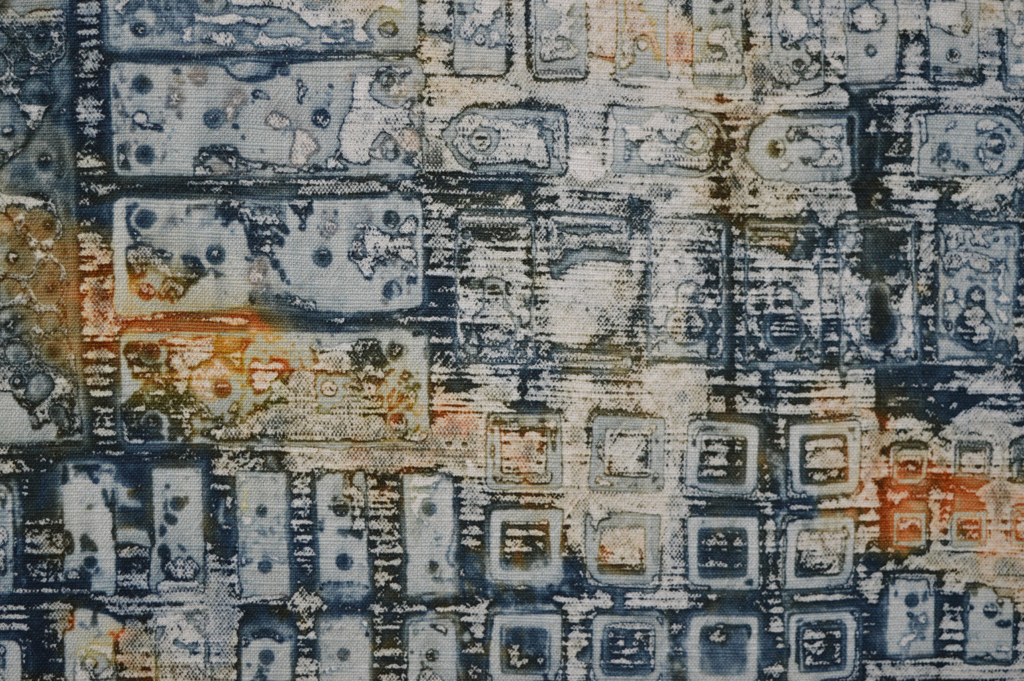 One of my goals for 2017 was to increase the number of blog posts by posting at least once a week. I've noticed that I get more 'traffic' when I put out posts close together. But I'm failing dismally. Why? Probably because I feel like my posts should have a proper subject, ideally something I've not covered before. It was easy last year when I was making and submitting lots of pieces. I could write about each piece, about my sucesses and my failures.
One of my goals for 2017 was to increase the number of blog posts by posting at least once a week. I've noticed that I get more 'traffic' when I put out posts close together. But I'm failing dismally. Why? Probably because I feel like my posts should have a proper subject, ideally something I've not covered before. It was easy last year when I was making and submitting lots of pieces. I could write about each piece, about my sucesses and my failures.
 Building work is so much easier when you invest early on. Encourage one child (or preferably two as it is always good to have a back up) to take things apart and occasionally put them back together again from an early age. Nuture a love of 'making' - Airfix kits, quilts, simple electronic kits, glitter covered gluey messes, Warhammer soldiers, tin foil covered shields and swords, anything they want. Support said child when they want to make a living by working with their hands. Provide interest-free loans with the Bank of Mum and Dad to buy all sorts of serious looking wood working and picture framing tools. Then sit back and enjoy decades of payback.
Building work is so much easier when you invest early on. Encourage one child (or preferably two as it is always good to have a back up) to take things apart and occasionally put them back together again from an early age. Nuture a love of 'making' - Airfix kits, quilts, simple electronic kits, glitter covered gluey messes, Warhammer soldiers, tin foil covered shields and swords, anything they want. Support said child when they want to make a living by working with their hands. Provide interest-free loans with the Bank of Mum and Dad to buy all sorts of serious looking wood working and picture framing tools. Then sit back and enjoy decades of payback.